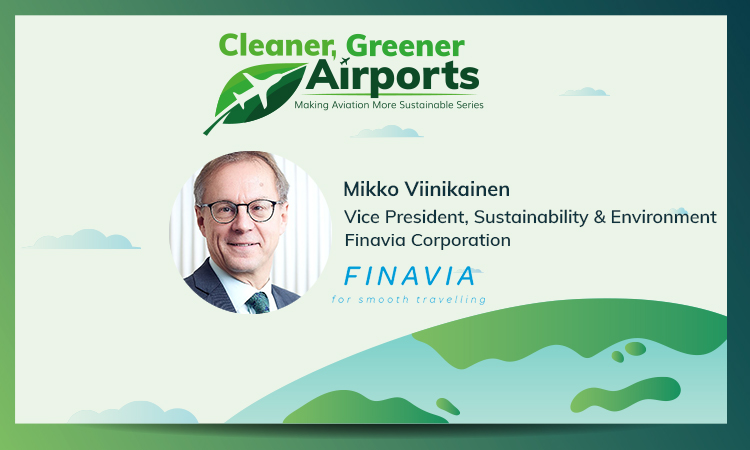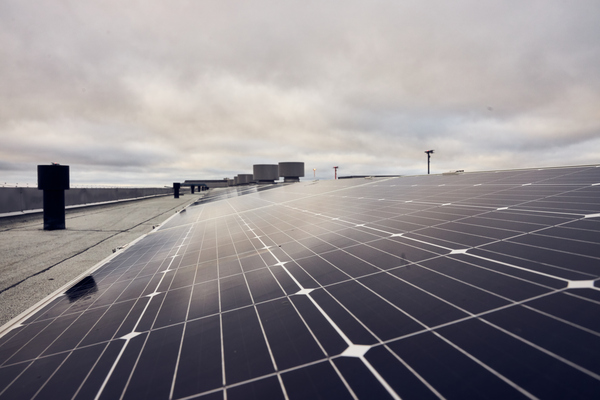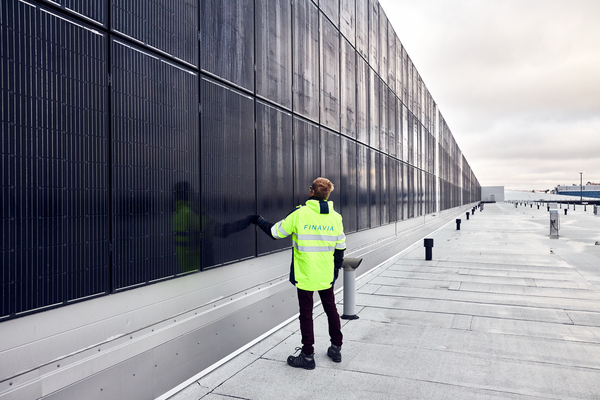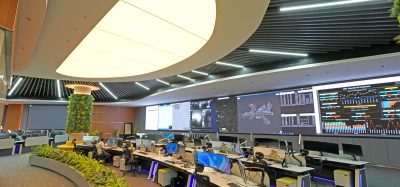Cleaner, Greener Airports: Making Aviation More Sustainable – Finavia’s 20 airports
Posted: 25 February 2022 | Mikko Viinikainen | No comments yet
In this instalment of International Airport Review’s exclusive online series, Mikko Viinikainen, Vice President of Sustainability and Environment at Finavia, discusses the steps the Finnish airport company has taken in reducing carbon emissions, and the complexities of implementing net zero emissions targets.


In 2008, Finavia started evaluating its carbon footprint and introduced its Climate and Energy programme. As the company’s carbon emissions decreased, the level of environmental ambition surged. Finavia’s operations at its airport network achieved carbon neutrality in 2019. Helsinki Airport (HEL) had already accomplished that goal in 2017. Today, we are no longer talking about reducing emissions, but eliminating them altogether.
Airports pave the way for air transport sustainability
Airports have been the forerunners in reducing carbon emissions in the air transport industry. This is mainly due to three reasons. Firstly, airports have a long history of working with environment permits and environmental concerns. We have learned to work proactively in mitigating any harmful impacts caused by airport operations. Once the urgency of climate crises became evident, airports were able to act quickly. Secondly, carbon emissions at airports are mainly due to use of energy in terminals, vehicles, and machinery, and thanks to the technological development, there are feasible technical measures to mitigate them. And finally, is the Airport Carbon Accreditation Scheme (ACA), which was established by Airports’ Council International Europe (ACI Europe) in 2009. The scheme created a framework and guidance for airports to prepare verified carbon footprints and to implement reduction measures.
Finavia started early and our ambitions are high
Finavia leads, and develops, a total of 20 airports in Finland. The main airport, Helsinki, a leading European hub for long-haul and connecting flights between Europe and Asia, exceeded 20 million passengers in 2019. The group of Lapland airports in the North, e.g., Kittilä and Rovaniemi, are vital for the regional tourism industry attracting hundreds of charter flights from central Europe during the winter season.
Finavia joined the ACA programme in 2011, and in 2017 Helsinki Airport was accredited with Level 3+ (Neutrality), followed by Lapland Airports in 2019. The rest of Finavia’s airport network follows the same principles of carbon management outside the formal ACA procedure. The steps laid out in our climate programme enabled us to achieve carbon neutrality at all our airports in 2019.
The steps laid out in our climate programme enabled us to achieve carbon neutrality at all our airports in 2019″
Carbon emissions from Finavia’s operations at all of our airports amounted to 34,600 tonnes in 2012. In 2021, the number of emissions was down to 13,800 tonnes. The residual emissions have been offset.
While Finavia’s operations are now carbon neutral, this isn’t enough. In May 2021, Finavia signed a commitment with ACI Europe to reach net zero emissions by 2030. However, Finavia’s own goal is more ambitious, as we aim to achieve net zero emissions during the next few years, and we have now drafted a master plan on how to execute this goal.
More renewables, step by step
A major source of emissions is the use of diesel fuel in airport maintenance vehicles. We have reduced these emissions at all our airports by switching to renewable diesel made by a Finnish company, Neste. In the short-term, as no electric – or hydrogen powered – alternatives yet exist, using renewable diesel is the only way to reduce emissions of our diesel-based vehicles.
Finavia’s own goal is more ambitious, as we aim to achieve net zero emissions during the next few years, and we have now drafted a master plan on how to execute this goal”
Two thirds of vehicle emissions come from heavy duty non-road machines using engine fuel oil. Machines like snow ploughs and snow blowers have very powerful engines and they are vital for keeping runways clear of snow during the winter. We are progressing on schedule in reducing emissions of this non-road fleet by renewable non-road diesel. Gradually, Finavia will be using renewables in all of its vehicles and machinery.


Credit: Finavia Corporation
The other major source of carbon emissions is the use of purchased electricity and thermal energy. Finavia’s whole airport network uses zero-emission wind electric power from the Nordic market. Finavia’s airport network’s need of electricity represents some 0.1 per cent of all electricity consumption in Finland. To decrease the amount of purchased electricity, three solar power systems were installed at Helsinki Airport during the ongoing development project. The solar power systems generate about five per cent of the electricity consumed by the terminals – the most in the summer when there is plenty of light. In addition, the almost 700 panels installed on the wall of the new parking building are used for charging electric cars.
RELATED NEWS & ARTICLES:
Helsinki Airport to welcome pre-booked ticketless parking
Helsinki Airport to launch new parking hall
Helsinki Airport the first to be named after its passengers
Finavia’s new Airport Operational Status system
Does the idea of the ‘airport city’ still fly?
An easy, smooth and Finnish travel experience at Helsinki Airport
Half of the airport network’s buildings are heated with thermal plants running on Finnish wood-based biofuel. The rest rely on local district heating networks for energy. Helsinki Airport is dependent on the Vantaa city power facilities, which are gradually moving from using fossils in production towards wood-based biomass and sorted waste materials. In 2019, the local energy provider achieved an emission factor of 133kg CO2 per MWh and is aiming to press the number of emissions to zero by 2026. Starting from 1 April 2022, the new Finnish legislation enables certificates of renewable district thermal energy to be registered in the national registry. For green thermal power, the registry works in the same way as the registry of guarantees of origin for green electricity. Until all local district thermal power is produced with zero emissions, Finavia will continue to use renewable thermal energy via certificates of origin governed by the competent authorities.


Credit: Finavia Corporation
Finavia has invested in energy-efficiency improvements. The current terminal extensions at Helsinki Airport exceed national building regulation requirements by 30 per cent and have reached the BREEAM Excellent rating. However, as the demand of heating energy increases, Finavia is also exploring ways to use geo-thermal energy at some of its airports.
From reduction to elimination
With the current technology, not all emissions are easily avoidable. Therefore, to reach carbon neutrality, Finavia has compensated for all the residual emissions via the voluntary carbon market’s reduction credits. The unprecedented growth of the reduction credit prices during the second half of 2021 is a sign of several industries setting themselves the goal of carbon neutrality.
On a company level, reaching net zero level means reducing the absolute emissions of your own activities as much as possible and eliminating any remaining emissions through investment in carbon removal and storage. Ideally, this would mean that emissions are down to zero, but minor emission may still be left. Strengthening natural carbon sinks, like afforestation, is currently the main measure that airport companies can take to eliminate any remaining emissions from the atmosphere. Markets and quality assurance procedures for carbon reduction projects are well established, but this is not yet the case for carbon elimination projects. More rigorous international standards are needed to clear any technical quality issues of carbon sink projects, and to solve the question of double counting of eliminated carbon.
With decades of experience in carbon management, airports are leading the way by moving from ambitious goals to action”
COVID-19 and the cost of reduced carbon
While airports and the whole aviation industry continue to grapple with the impacts of the pandemic, climate change has kept the industry focused on sustainability. With decades of experience in carbon management, airports are leading the way by moving from ambitious goals to action. Reaching these goals is challenging, as the industry’s financial horizon is blurry. Most measures to reduce carbon emissions are technologically available and the costs can be estimated reasonably well. However, the technology of carbon capture and markets for carbon elimination credits have not matured. This causes financial uncertainty for airports that are setting their net zero goals.
Biography


Join our free webinar: Beyond silos: How ecosystem thinking elevates the airport experience
In today’s complex aviation landscape, airports are moving beyond siloed operations to embrace a new era of collaboration. This webinar focuses on how leading airports are using ecosystem thinking to adapt, personalize, and continuously improve every touchpoint, boosting both passenger satisfaction and non-aeronautical revenue.
Date: 13 Nov | Time: 10:00 GMT
REGISTER NOW TO SECURE YOUR SPOT
Can’t attend live? No worries – register to receive the recording post-event.
Related topics
Airport Carbon Accreditation (ACA), Airport development, Airside operations, Cleaner, Greener Airports: Making Aviation More Sustainable Series, COVID-19, Emissions, New technologies, Parking, Passenger experience and seamless travel, Sustainability, Sustainable development, Terminal operations
Related airports
Related organisations
Airport Carbon Accreditation (ACA), Airports Council International Europe (ACI Europe), Finavia


















